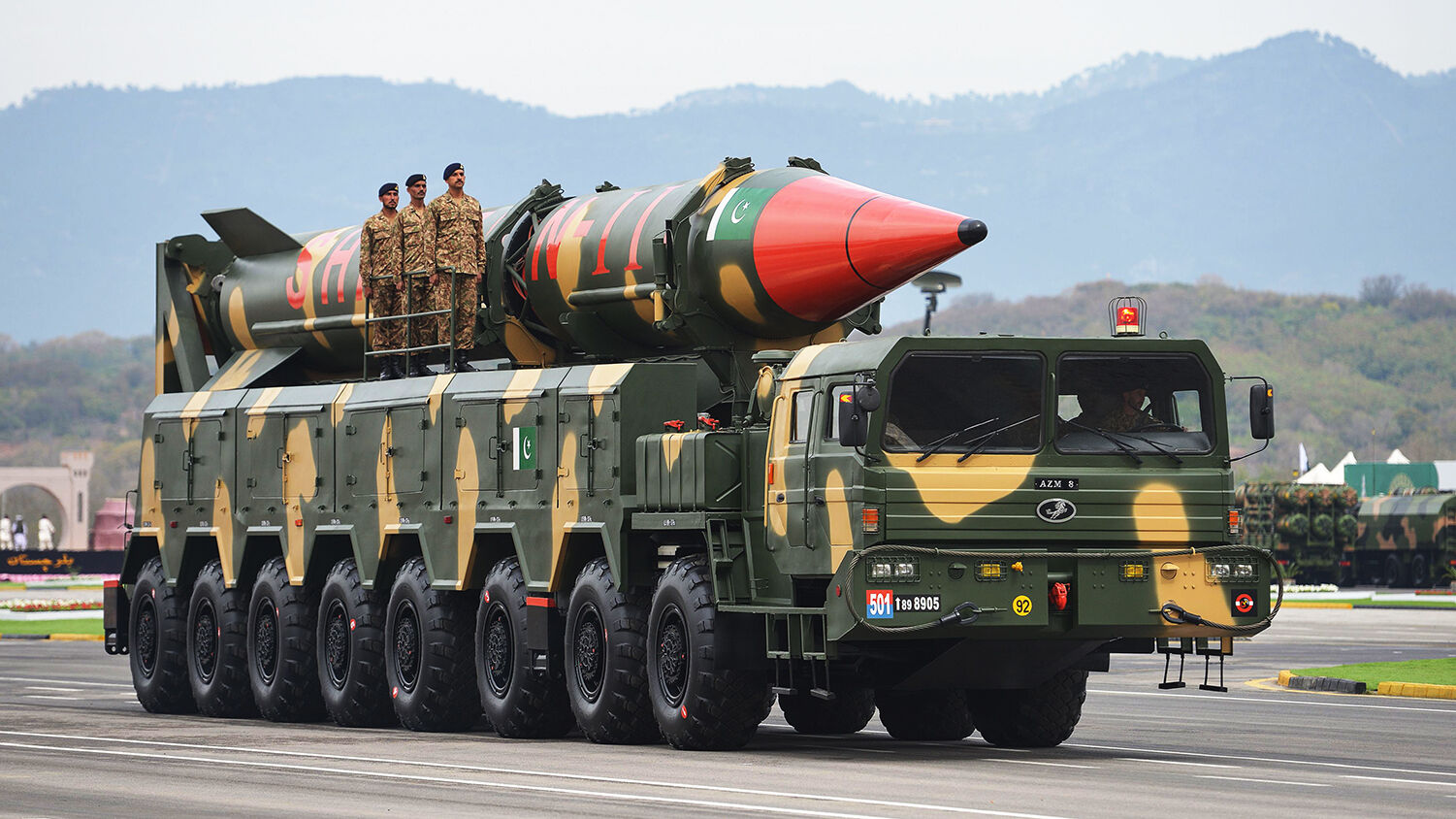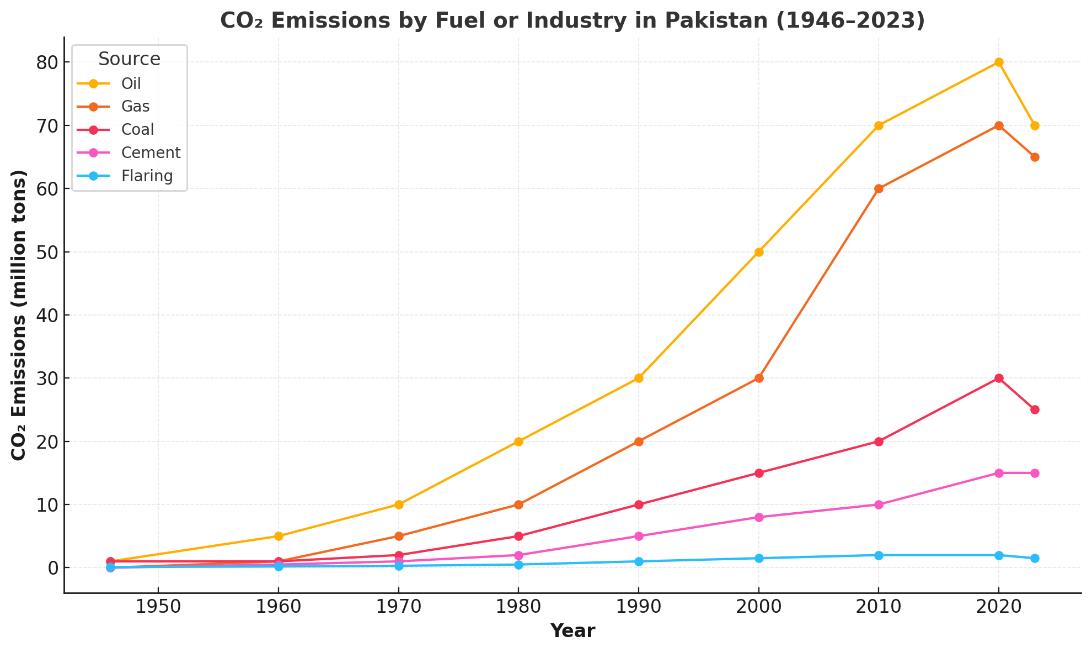
Globalization, while advancing economic growth and connectivity, has left a troubling legacy of environmental degradation. Nowhere is this more evident than in South Asia, where greenhouse gas emissions, once negligible, are accelerating due to rapid urbanization and industrialization. In 2020, a temporary decline of 8.51% in CO2 emissions occurred, largely due to pandemic-induced economic slowdowns. However, this dip failed to signify structural change. In the previous decade, fossil fuel consumption (71.52%) continues to dominate the region’s energy landscape, with coal and oil at the forefront, leaving renewable energy contributions in decline. This trajectory is unsustainable, especially for a country like Pakistan, which is grappling with acute energy shortages and the need to meet its climate commitments.

Despite contributing only 0.53% to global CO₂ emissions in 2023, Pakistan is among the most vulnerable countries to climate change impacts. its heavy reliance on fossil fuels continues to grow. Coal use, in particular, has surged, raising alarms about its environmental and economic sustainability. While the country’s share of renewable energy remains dismally low, nuclear energy emerges as a powerful and underutilized solution. As the world transitions to cleaner energy, Pakistan needs to increase the capacity of nuclear energy to ensure energy security reduce its growing dependence on fossil fuel imports and address climate challenges.
Nuclear energy offers a unique advantage in ensuring reliable and low-carbon electricity generation. Unlike solar and wind energy, which can be considered as an intermittent energy source, nuclear plants provide consistent power, operating continuously for 12-24 months without interruption. Pakistan’s six operational Nuclear Power Plants (NPPs), with a total capacity of 3,530 megawatts, generated 21% of the nation’s electricity in 2023, despite accounting for only 8.6% of installed capacity. This efficiency, coupled with nuclear low operational costs, underscores its potential to reshape Pakistan’s energy landscape. In December 2022, nuclear power was the cheapest source of electricity in the country, at just PKR 1.07 per kilowatt-hour—far below the costs of coal (PKR 11.5/kWh) and imported gas RLNG (PKR 20.2/kWh).
Economically, expanding nuclear energy is not just an option but a necessity. With fossil fuel imports consuming nearly a third of the country’s foreign exchange reserves, Pakistan cannot afford to sustain its current energy mix. Nuclear power provides a path to reducing dependency on costly imports while ensuring stable energy prices. Despite a poor developing country, Pakistan is trying to shift from its reliance on fossil fuel (which accounts for 86%) to nuclear providing a reliable, cost-effective, and low-carbon energy source. Currently, its nuclear energy in the national energy mix is 17.4%. Pakistan aims to increase nuclear capacity to 8,000 megawatts by 2030, which aligns with both economic growth and environmental sustainability.
The major challenges to nuclear energy are safety concerns and radioactive waste which mostly face criticism. However, Pakistan has consistently demonstrated its commitment to international safety standards and has designed to withstand seismic activity, a critical consideration given the country’s vulnerability to natural disasters. More importantly, the nuclear waste generated over decades is significantly smaller in volume compared to the waste produced by coal plants in a single hour. Advanced waste storage solutions and adherence to International Atomic Energy Agency (IAEA) guidelines further mitigate these challenges, positioning nuclear energy as a safe and sustainable option.
Pakistan’s energy future lies in a balanced mix of nuclear and renewable energy. Along with renewable sources such as solar and wind energy sources, nuclear energy provides the foundation for a stable and sustainable power supply. These resources are ideal for meeting peak demand and addressing energy needs in remote areas, but, according to the yearly report of the National Electric Power Regulatory Authority’s (NEPRA) 2022, their current contribution to Pakistan’s grid (43775 MW) is minimal as representing 7% of the total mix. To maximize its potential, Pakistan should invest in hybrid systems that integrate renewables with nuclear power. Emerging technologies, such as Small Modular Reactors (SMRs), offer additional flexibility, making it possible to deploy energy solutions in off-grid or underserved regions efficiently.
In a nutshell, the nuclear energy expansion of Pakistan is not only crucial for meeting its energy crisis but is also a strategic step toward sustainability and climate resilience. By promoting peaceful uses of nuclear technology, ensuring stringent safety measures, and integrating renewable sources, Pakistan can lead by example in transitioning to a low-carbon economy in the region and globally. Pakistan needs to enhance its exposure in nuclear technology to achieve targets of clean energy and embrace nuclear energy and renewables to secure a cleaner, more sustainable future for generations to come.
